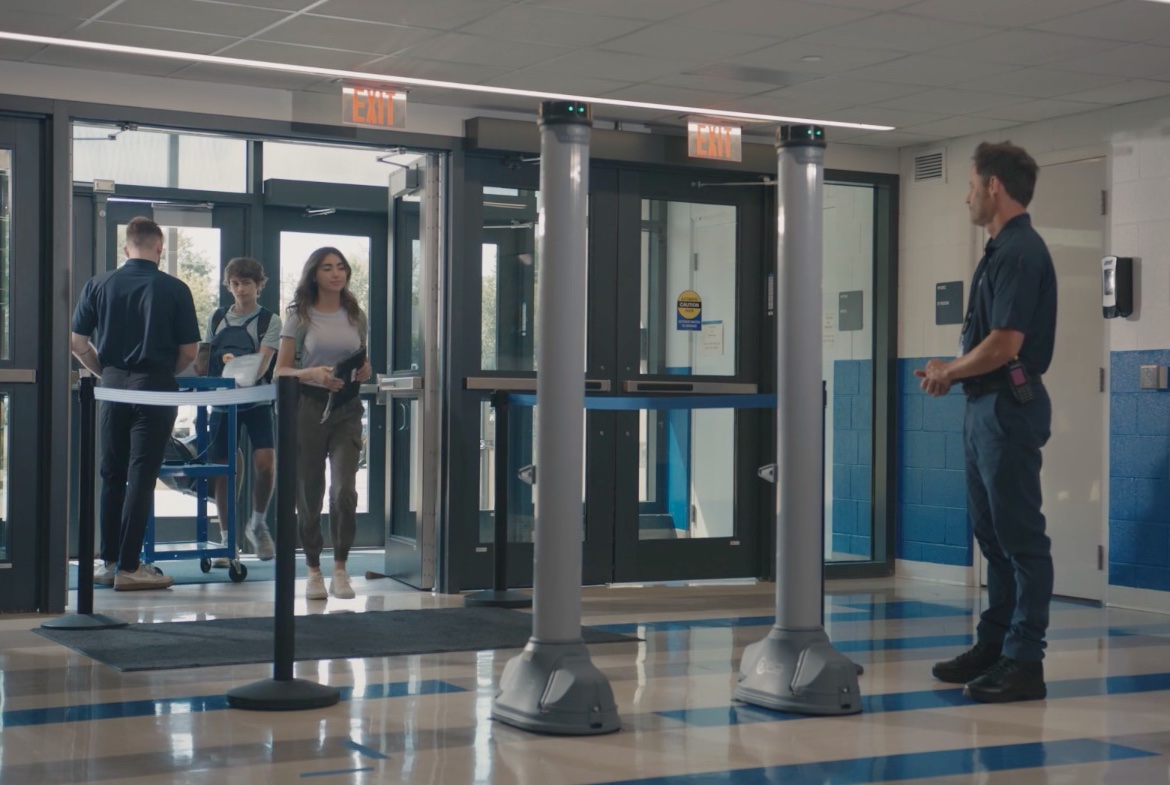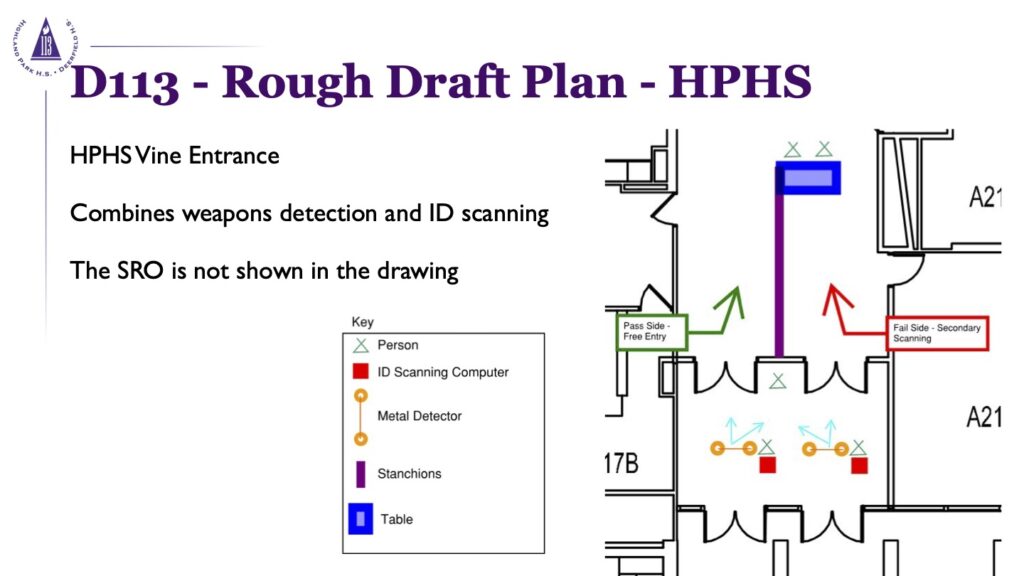
Staffing shortage threatens expansion and future of weapons detectors at HPHS, DHS, according to administrators
Entryway weapons detectors may not last the school year at Highland Park and Deerfield high schools, according to school district officials during a board of education meeting on Nov. 28.
Township District 113 reportedly is having difficulty staffing the recently added security systems, and the School Board plans to review their usage.
“That is the issue for us, having adequate staffing,” Superintendent Dr. Bruce Law told School Board members on Nov. 28.
Public outcry in the wake of a gun brought to HPHS in April led the district to approve security improvements districtwide in August. Those improvements included the addition of weapons detection systems, but the systems have only been active at a single entrance at each high school, according to a security presentation from Brian Ahmer, the district’s chief operations officer.
Ahmer explained that each detection system requires two to three staffers to effectively operate. A two-lane setup in an entryway needs five employees. Currently, each D113 school uses one system and rotates it to different entrances. Law said the district has for months attempted to expand the systems to more entrances, but has been unable to staff the expansion. He said job postings are active and the district has attempted, to no avail, to encourage internal staff to assist with the weapons detectors.
Highland Park High School has three main entrances, and the district wants one two-lane and two one-lane weapons-detection setups. That would require up to 10 staffers. Law said the district is looking to hire six traffic-safety guards to allow security personnel to come inside the buildings and staff the additional weapons detectors.

After hearing the presentation, School Board members questioned the future of the weapons detectors and decided to review their effectiveness and feasibility during a future meeting.
Officials said the current setup — with the systems at one entrance per school — is not sustainable even at current staffing levels, as it disrupts the responsibilities of other building leaders who often tend to the systems.
The board wants to collect feedback from stakeholders, measuring how the weapons detectors have impacted school culture and feelings of safety. Some members wondered if the weapons detectors are a legitimate safety measure, mentioning schools shootings in which a weapons detector would not have stopped the shooter.
Other members and officials commented that the detectors are one layer of many within the district’s security plan — many of which were also part of the security presentation Nov. 28.
Ahmer began his report by summarizing a recent visit he and two other district officials took to Marjory Stoneman Douglas High School in Parkland, Florida, where in 2018 a gunman murdered 17 people and injured 17 more.
Ahmer said the facility tour was difficult, but plenty was learned and confirmed that the district is on the right path with many of its recent security improvements.
“I appreciate (the employees) doing this. It could not have been easy,” Law said. “The reason they went was not out of curiosity but was to learn. It speaks volumes of those individuals and their commitment.”
Ahmer went on to detail a number of other security features in the works or recently put in place within the district’s schools.
• Security film: Should be installed on glass around school buildings by February 2024. The film limits the ability to access the building, even with gunfire, through glass windows and doors.
• Card readers on exterior doors: The card readers will expand to all exterior doors in the district and limit and monitor access both in and out. The additional readers reportedly will be operational in the second semester of this school year.
• Access control for classroom doors: Enables classrooms to be remotely locked and unlocked in an emergency. System is being tested and deployment expected in summer 2024.
• Building threat assessment: A step-by-step plan to respond to a potential emergency, details what to do when faced with a threat and “will hopefully allow a more timely response and appropriate actions to protect everyone,” Law said. Implementation and training underway.
• Enhanced security cameras: Use artificial intelligence/machine learning to identify a brandished weapon and issue an alert within seconds. Already in place.
Law said the district will continue to attempt to expand additional weapons detectors until the School Board directs otherwise. Administrators will provide another update at the board’s December meeting.
The Record is a nonprofit, nonpartisan community newsroom that relies on reader support to fuel its independent local journalism.
Subscribe to The Record to fund responsible news coverage for your community.
Already a subscriber? You can make a tax-deductible donation at any time.

Joe Coughlin
Joe Coughlin is a co-founder and the editor in chief of The Record. He leads investigative reporting and reports on anything else needed. Joe has been recognized for his investigative reporting and sports reporting, feature writing and photojournalism. Follow Joe on Twitter @joec2319


